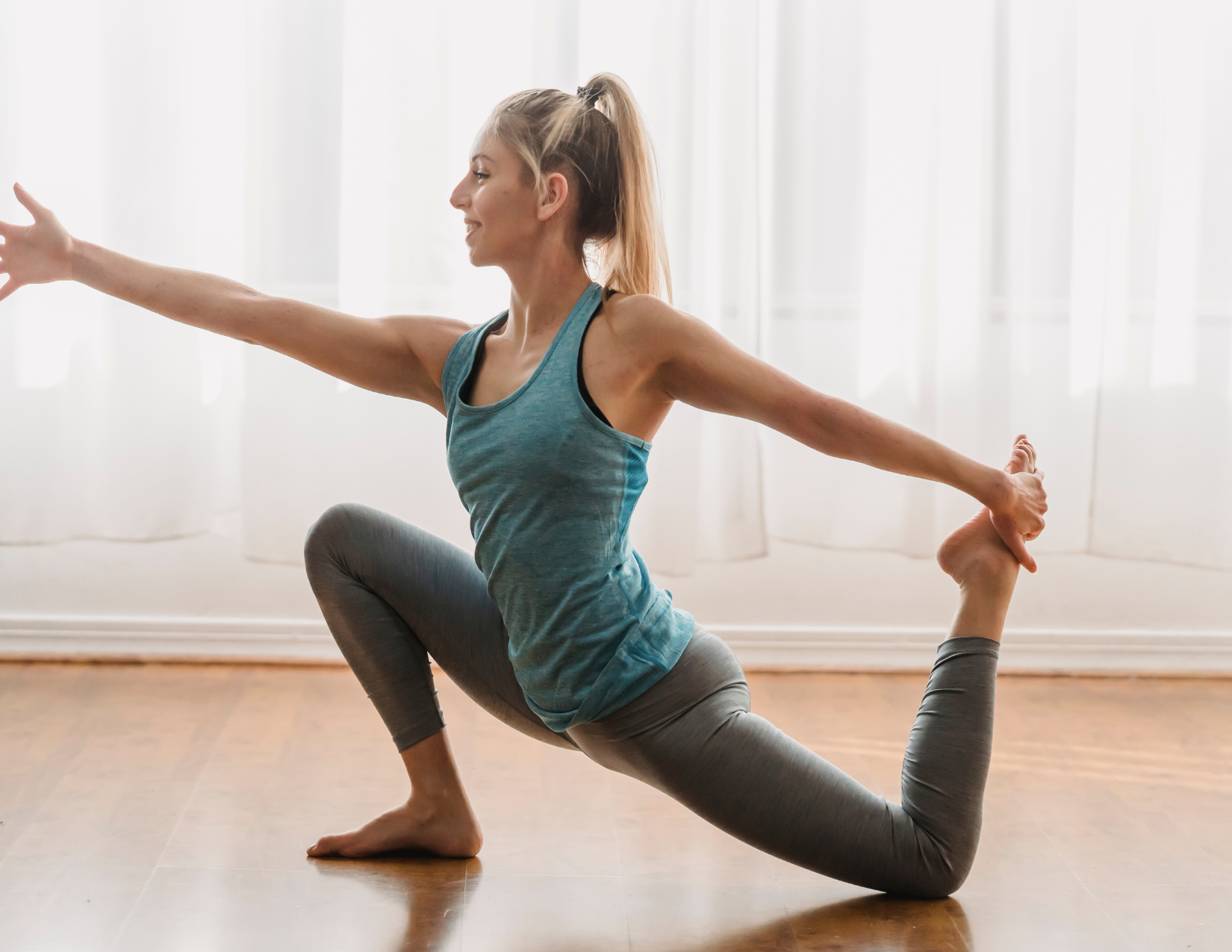Flexibility is often overlooked in many fitness routines, yet it plays a crucial role in overall health, performance, and injury prevention. At AB Health and Fitness, we emphasize the importance of incorporating flexibility exercises into your fitness plan, regardless of your fitness goals. Whether you’re training for a specific sport, focusing on general fitness, or aiming for weight loss, flexibility should be an essential part of your workout routine.
Why Flexibility Matters
Flexibility refers to the range of motion in your joints and muscles. It’s the ability of your muscles and tendons to stretch, allowing your body to move freely. Flexibility is essential for maintaining proper posture, avoiding muscle strain, and improving overall mobility. Here are some of the key benefits of improving flexibility:
1. Injury Prevention
One of the biggest benefits of improving flexibility is its role in injury prevention. When your muscles are flexible, they can move more freely and are less likely to get injured during physical activity. Tight muscles are more prone to strains, sprains, and tears, especially during high-intensity workouts or sports. By including flexibility exercises like stretching or yoga into your routine, you can reduce the risk of these injuries.
2. Improved Posture
Flexibility isn’t just about being able to touch your toes. It’s also about improving the alignment and mobility of your joints and muscles. When you improve your flexibility, you can also improve your posture. Tight muscles in the back, shoulders, or hips can pull your body out of alignment, leading to poor posture and discomfort. Regular stretching can help release these tight muscles and improve overall posture.
3. Better Performance
Flexibility can directly impact your athletic performance. Many sports, such as running, swimming, and cycling, require a full range of motion in the joints to perform optimally. Flexibility training allows for smoother, more efficient movements, helping you to perform better in your workouts or competitions. It also enhances muscle coordination, which is important for both strength and endurance exercises.
4. Increased Blood Flow
Stretching and flexibility exercises increase blood flow to your muscles and joints. Increased circulation helps supply muscles with oxygen and nutrients, which are necessary for recovery and muscle repair. This is especially important after intense workouts or when performing high-impact exercises. Enhanced blood flow can also reduce muscle soreness and speed up recovery time.
5. Reduced Muscle Tension
After an intense workout or long day of physical activity, your muscles can become tense and fatigued. Stretching helps alleviate this tension, promoting relaxation and reducing discomfort. Incorporating flexibility exercises into your cool-down routine can help your body return to its baseline state after exertion, leading to less soreness and better recovery.
Types of Flexibility Exercises
There are different types of flexibility exercises you can incorporate into your routine to improve mobility and range of motion. Here are the most common types:
1. Static Stretching
Static stretching involves holding a stretch for a period of time, typically between 20–30 seconds. This type of stretching helps lengthen the muscles and improve overall flexibility. Examples include stretching your hamstrings by touching your toes or holding a quad stretch by pulling your heel toward your glutes.
2. Dynamic Stretching
Dynamic stretching involves moving parts of your body through a full range of motion, typically in a controlled manner. These stretches are usually performed before exercise to prepare your muscles for activity. Dynamic stretches include leg swings, hip circles, and walking lunges. Unlike static stretching, dynamic stretches are intended to warm up the muscles rather than increase flexibility.
3. Yoga and Pilates
Yoga and Pilates are excellent ways to improve flexibility and balance. These practices incorporate a series of poses and stretches that increase flexibility while also building strength, stability, and mindfulness. Regular practice of yoga or Pilates can help improve both your physical and mental well-being, offering a holistic approach to fitness.
How to Incorporate Flexibility Training Into Your Routine
It’s important to make flexibility a regular part of your fitness routine, and there are many ways to do so:
1. Incorporate Dynamic Stretching Before Workouts
Before your workout, incorporate dynamic stretching to warm up your muscles and prepare them for exercise. This helps improve mobility and prevents injury during your workout. Focus on areas that will be used the most, such as your legs, back, and shoulders.
2. Cool Down with Static Stretching
After your workout, cool down by incorporating static stretches into your routine. Hold each stretch for 20–30 seconds to help lengthen your muscles and reduce muscle tension. This can be particularly beneficial after intense strength training or cardio sessions.
3. Include Yoga or Pilates in Your Weekly Schedule
To improve flexibility over time, consider adding a yoga or Pilates session to your weekly schedule. These practices are great for enhancing both flexibility and strength and can be easily adapted to suit your fitness level.
How AB Health and Fitness Can Help
At AB Health and Fitness, we understand the importance of flexibility in achieving overall health and fitness goals. Our trainers are here to help you design a fitness plan that includes flexibility exercises tailored to your needs. Whether you’re training for a marathon, recovering from an injury, or just want to improve your range of motion, we can help you develop a balanced fitness routine that works for you.
Ready to increase your flexibility and take your fitness to the next level? Visit AB Health and Fitness or call us at 03 8364 8984 to book a consultation today!
How Flexible Are You?
Do you make flexibility exercises a priority in your fitness routine? How has flexibility training benefited your workouts or overall health? Share your experiences in the comments below!
Sources:
- Better Health Channel: Benefits of Stretching
- Health Direct Australia: Flexibility Exercises
- Australian Physiotherapy Association: Stretching and Flexibility







